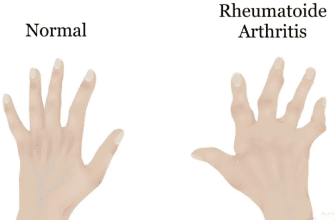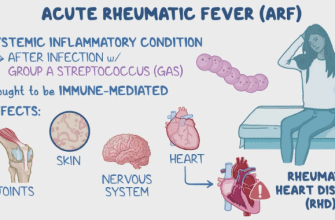What are Benign Esophageal Tumors?
Benign esophageal tumors are non-cancerous growths that develop in the wall of the esophagus. They are rare, especially compared to esophageal cancer, and are characterized by their slow growth and inability to invade other tissues or metastasize. They originate from different layers of the esophageal wall.
Types
The type is defined by the tissue from which the tumor arises:
- Leiomyoma:
- The most common benign esophageal tumor (accounts for ~60-70% of cases).
- Originates from the smooth muscle layer (muscularis propria) of the esophagus.
- Most frequently found in the middle and lower thirds of the esophagus.
- Typically a single, firm, well-defined mass.
- Esophageal Cysts:
- The second most common type.
- Not true tumors, but congenital duplications or retention cysts that can behave like one.
- Filled with fluid and lined with esophageal mucosa or other tissue types.
- Gastrointestinal Stromal Tumor (GIST):
- While often malignant in the stomach, GISTs in the esophagus are more likely to be benign but still have malignant potential. They require careful evaluation and are treated as potentially cancerous.
- Arise from interstitial cells of Cajal.
- Other Rare Types: Includes fibromas, lipomas (fatty tissue), neurofibromas (nerve tissue), and hemangiomas (blood vessels).
Symptoms
The crucial point is that most benign esophageal tumors are asymptomatic and are discovered incidentally during testing for another issue.
When symptoms do occur, they are usually due to the tumor’s size pressing on structures or obstructing the esophagus:
- Dysphagia: Difficulty swallowing, especially with solid foods (the most common symptom).
- Odynophagia: Pain on swallowing.
- Chest Pain or Discomfort: A feeling of pressure or pain behind the breastbone.
- Regurgitation: Bringing up undigested food.
- Respiratory Symptoms: Cough, wheezing, or recurrent pneumonia if a large tumor compresses the airway.
- Heartburn or a feeling of fullness after eating.
Warning Signs & When to See a Doctor
See a gastroenterologist or your primary care physician if you experience persistent:
- Difficulty swallowing that is new or worsening.
- Unexplained chest pain that is not related to your heart.
- Sensation of food sticking in your chest.
- Frequent regurgitation.
While these symptoms are more likely caused by common conditions like GERD, they warrant investigation to rule out both benign and malignant growths.
Diagnosis
Diagnosis aims to confirm the presence of a mass and, most importantly, determine that it is benign.
- Barium Esophagogram (Barium Swallow): Often the first test. You drink a contrast liquid, and X-rays are taken. It shows the outline of the esophagus and can reveal a smooth, well-defined filling defect characteristic of a benign tumor like a leiomyoma.
- Upper Endoscopy (EGD): The key diagnostic tool. A gastroenterologist uses a flexible scope to view the esophagus directly. A benign tumor typically appears as a smooth, rounded mass covered by normal, healthy-looking esophageal mucosa.
- Endoscopic Ultrasound (EUS): This is the most critical test for characterization. An endoscope with a small ultrasound probe at the tip is used. It provides a detailed image of the esophageal layers, showing exactly where the tumor originates (e.g., in the muscle layer). It can also measure its size accurately and guide a biopsy.
- Biopsy: Standard biopsies taken during endoscopy often only sample the mucosa and miss deeper tumors. EUS-guided fine-needle aspiration (FNA) allows for a safer and more accurate biopsy of the deeper tumor tissue to help confirm the diagnosis (though it is not always necessary for classic-appearing leiomyomas).
Treatment
Management is highly individualized based on the tumor type, size, and symptoms.
- Asymptomatic, Small Tumors (<3-5 cm): Observation. This is the standard approach. The tumor is monitored with periodic endoscopy or EUS to ensure it is not growing.
- Symptomatic or Large Tumors (>5 cm): Treatment is typically recommended due to the risk of complications and the increasing difficulty of removal as they grow. Large size is also a relative indicator of potential (though rare) malignant transformation for some tumor types.
Types of Surgery
The goal of surgery is complete removal while preserving esophageal function.
- Enucleation:
- The preferred surgery for leiomyomas and other submucosal tumors.
- The surgeon carefully shells out the tumor from the surrounding healthy esophageal muscle wall, preserving the mucosal lining.
- This can often be done using minimally invasive techniques like thoracoscopy (through the chest) or laparoscopy (through the abdomen), leading to faster recovery.
- Esophageal Resection:
- Reserved for very large tumors that cannot be enucleated, tumors that involve a large portion of the esophagus, or if there is suspicion of cancer.
- Involves removing a section of the esophagus and reconnecting it. This is a much larger operation.
- Endoscopic Resection:
- For very small tumors that originate in the superficial layers, techniques like Endoscopic Mucosal Resection (EMR) or Submucosal Dissection (ESD) can be used. This is not suitable for most leiomyomas, which are deep in the muscle layer.
Prognosis
The prognosis for benign esophageal tumors is excellent.
- After successful surgical removal, recurrence is very rare.
- There are no long-term consequences, and the patient is typically cured.
- For patients under observation, the vast majority of tumors remain stable and never cause problems.
Prevention
There are no known ways to prevent the development of benign esophageal tumors, as their causes are largely unknown and likely spontaneous.






